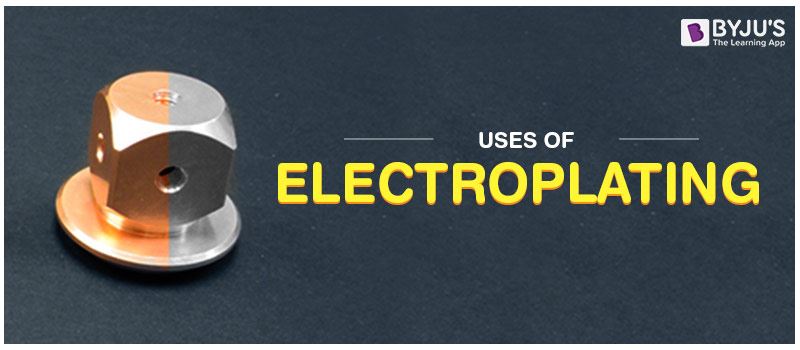
We know that one of the major uses of electroplating is to coat a surface with a thin layer of metal with the help of the electrochemical process. There are wide ranges of applications of this process in the manufacturing industry and various other fields. Below are a few mentioned practical applications of electroplating.
Some Applications & Uses of Electroplating are listed below:
- Aesthetics
- Commercial applications
- To prevent corrosion
- Conduction of Electricity
- Reduce friction
- To protect from radiation
Electroplating used in Aesthetics
Valuable metals that are rare and expensive as gold and silver are very common examples of this application.
With the help of electroplating, a thin layer of these valuable metals can be coated on a cheaper metal which can give an attractive look to the final product at a lower cost. This is one of the widest commercial applications of electroplating today. This process is used for designing jewelry and other ornaments.
Electroplating used in Commercial Applications
Electroplating is used on car parts with a thin layer of chromium for a smooth texture and appearance. They are also done on various other appliances customized according to the buyer’s request.
Uses of Electroplating to prevent corrosion
As metals are prone to natural effects such as corrosion, a thin layer of non-corrosive metals covering the corrosive one can help metals and appliances last longer than usual. The non-corrosive metals such as copper, chromium, and nickel are basically used these days to spread over corrosive metals like steel and iron.
Electroplating helps in conduction of Electricity
In integrated circuits that are used in computers, cell phones, and other electronic devices, use good conductors of electricity such as gold and silver. But, due to the high price of these metals, a small quantity of these precious high-quality metals can be coated as a thin layer over other metals and helps in the conduction of electricity.
Electroplating is used to reduce friction
Apart from these uses, electroplating can be used in other areas where we can reduce friction by introducing a certain kind of metal over another.
Electroplating helps to protect from radiation
Electroplating also helps to protect from radiation, abrasion, and many other natural phenomena just by imparting the desired characteristics to a surface of the metals which lacks those properties.
These were some uses of Electroplating. If you wish to find out more, download BYJU’S The Learning App.
RELATED ARTICLES:
| Electrolysis and Electroplating | Resistivity of Various Materials |
| Electroplating Process | Electric Current : The Flow Of Charge |
Frequently Asked Questions – FAQs
What is electroplating?
What are the uses of electroplating?
- Used in jewellery
- Purification of metals
- Changing the texture of metal surfaces
- Preventing corrosion
- Facilitating conduction in circuit boards

Comments